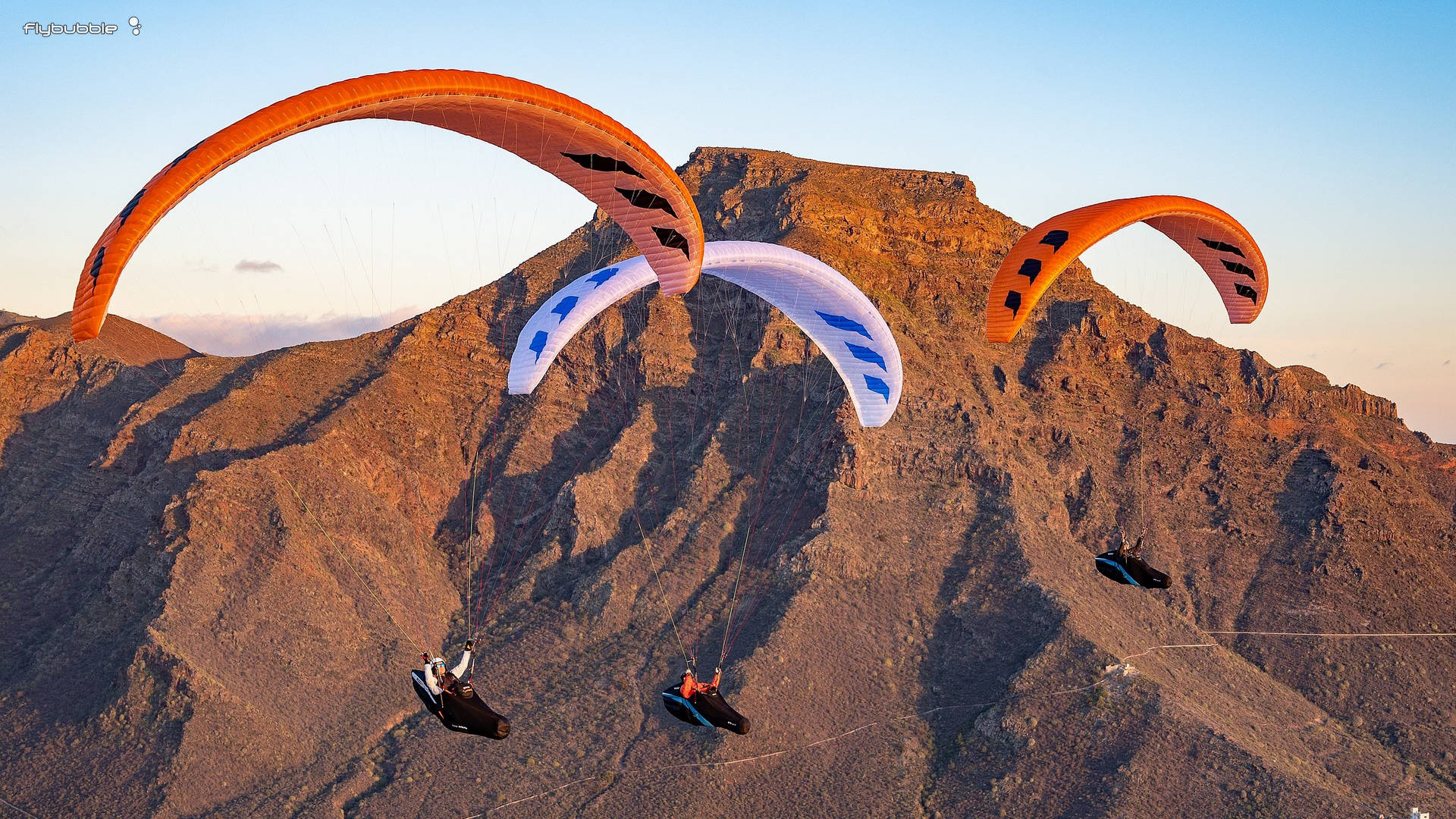
The best glider in the world is no use to you if it isn’t the correct size for your flying weight! In this third article of our Choose The Right Paraglider series, we look at paraglider weight ranges and the effect that wing loading has on performance, stability and handling, and how to decide what's best for you.
First, join us in an investigation. Paraglider weight ranges include everything that goes up into the air: you, all gear (including the wing) and anything else you carry. So stuff everything into your glider backpack, exactly as you would walk up the hill, with your extra jacket and footwear. Then stand on the scale! More than you thought, huh?
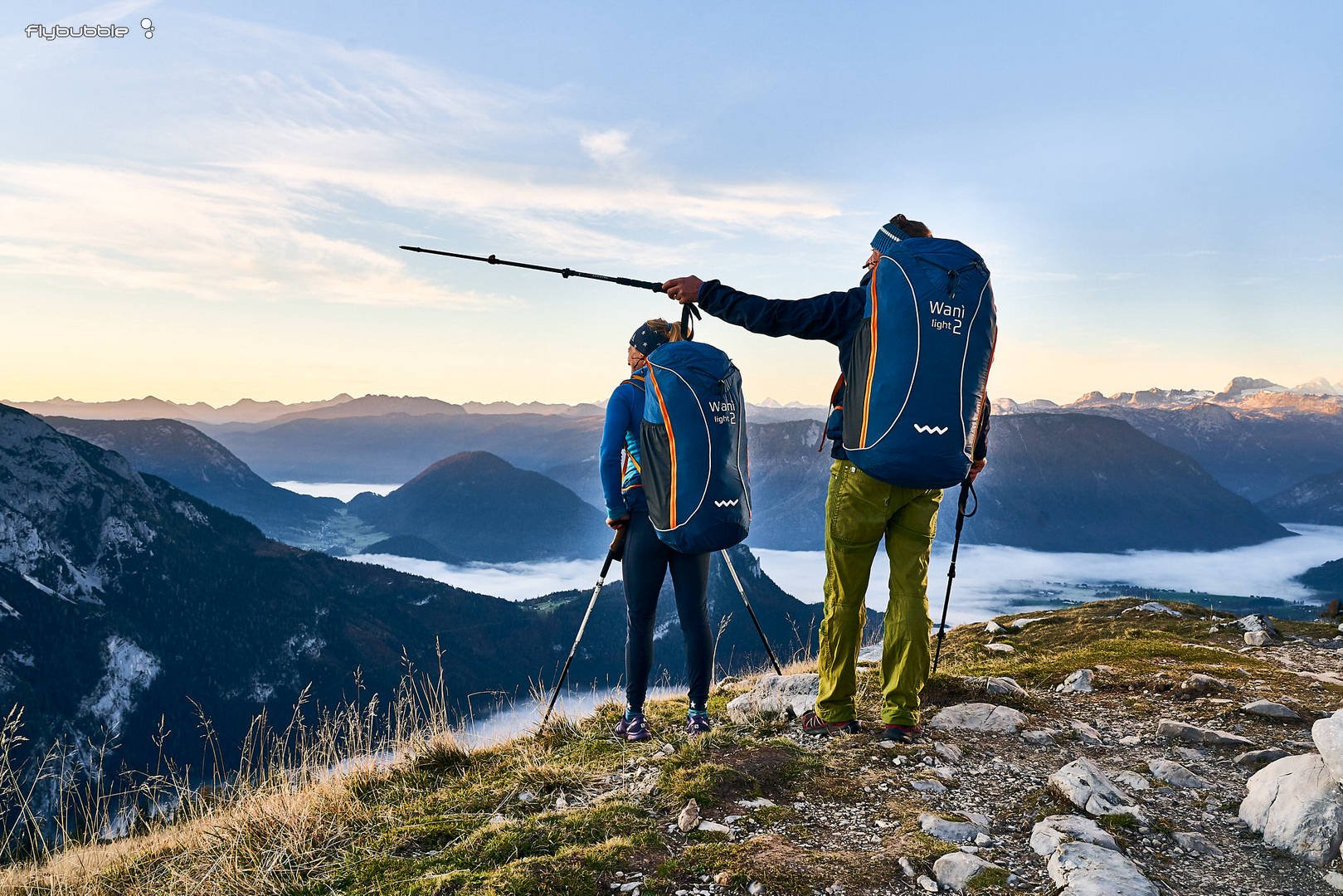 > Your all-up / total flying weight includes *everything* you carry up the hill—everything that goes up into the air—including the wing, and you!
> Your all-up / total flying weight includes *everything* you carry up the hill—everything that goes up into the air—including the wing, and you!
Your flying equipment and all the extras usually adds 12-20kg to your clothed weight (depending on the weight of your kit and how much other stuff you carry).
What does it matter? Well, they say that by loading a given wing with more weight you will increase all flying speeds, increase stability and get more responsive handling. But is it really true?
The effect of weight on speed
Top speed is a safety factor. But, as we shall see, you cannot change this much with either ballast or downsizing, and within a given class the speeds are very similar.
We tested the effect of adding 20kg to a pilot’s flying weight on an EN D wing with a weight range of 85-105kg, flying directly upwind and downwind and averaging the GPS speeds achieved.
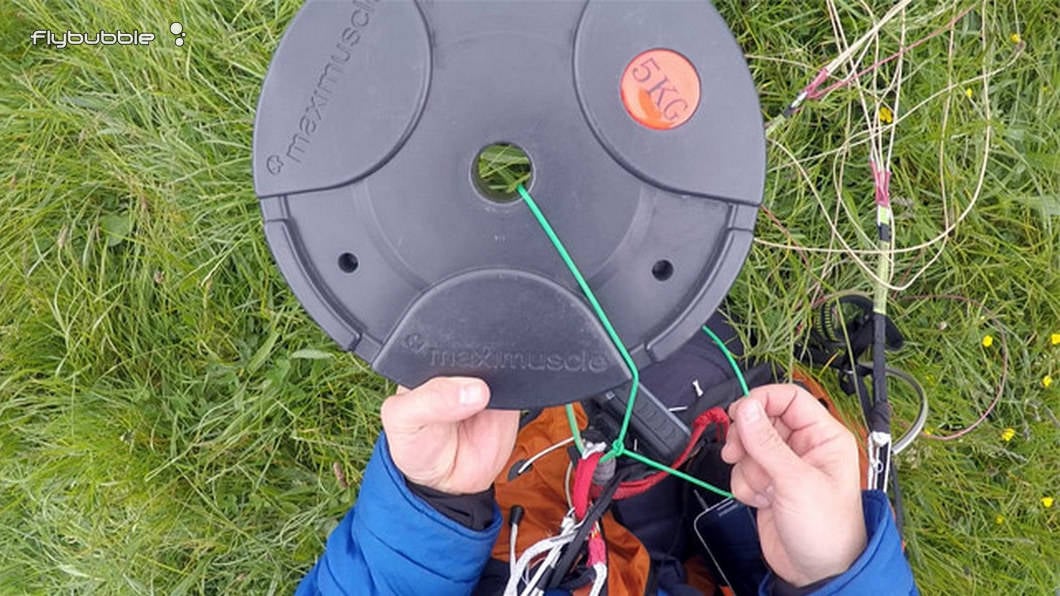 > Big Bad Ballast. Don't try this at home, kids! ;-)
> Big Bad Ballast. Don't try this at home, kids! ;-)
Flying at 85kg: trim speed = 33.3km/h, full bar = 47.2km/h
Flying at 105kg: trim speed = 36.3km/h, full bar = 52.8km/h
Speeds also vary greatly depending on temperature, pressure and altitude. We have recorded 39km/h at trim and 59km/h on full bar many times, but the day of our tests was a ‘slow’ one – 15 degrees, 250m ASL, 1013hPa. As we are investigating relative changes it doesn’t matter.
Adding 20kg of ballast increased trim speed by 3km/h and top speed by 5.6km/h, or +10% speed for +20% weight. But 4kg is the practical limit of ballast – any more is cumbersome in your harness and upsets your balance. In these conditions, adding a big ballast bag of 4kg would increase trim speed by no more than 0.8km/h and top speed by no more than 1.3km/h or 3%.
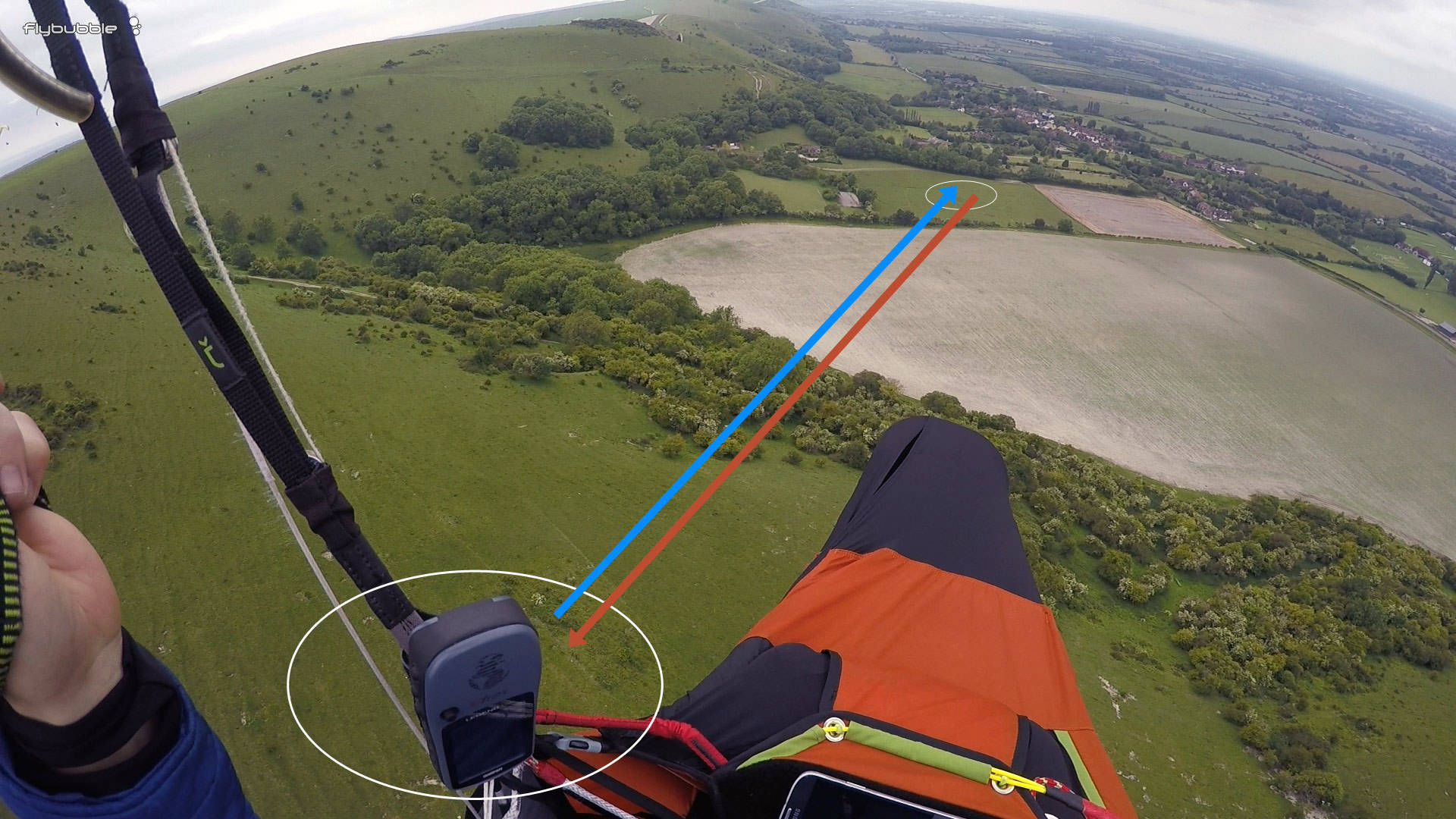 > Simple speed test using GPS speeds.
> Simple speed test using GPS speeds.
(We’ve been generous here as it’s not entirely linear: as you add more weight you get less of a benefit in speed as the drag increases at the square of the change in velocity. On earlier tests on a tandem, adding 70kg (a passenger) increased trim speed by only 7km/h, not 10.5km/h).
If you think a 1km/h advantage is going to win you a competition, remember that there is a sink rate penalty when carrying ballast, which will slow you down as more thermaling will be needed. Being slightly behind but faster on glides might be a strategic advantage, but either way it’s an incredibly marginal benefit.
For most pilots, adding ballast is a waste of energy. It will not make a strong-wind day flyable and it makes your carry-up a nightmare.
Downsizing
What about moving down a size onto a smaller wing? This can increase your speed slightly more than 4kg of ballast, theoretically by +1.5km/h at trim and +2.5km/h flat out.
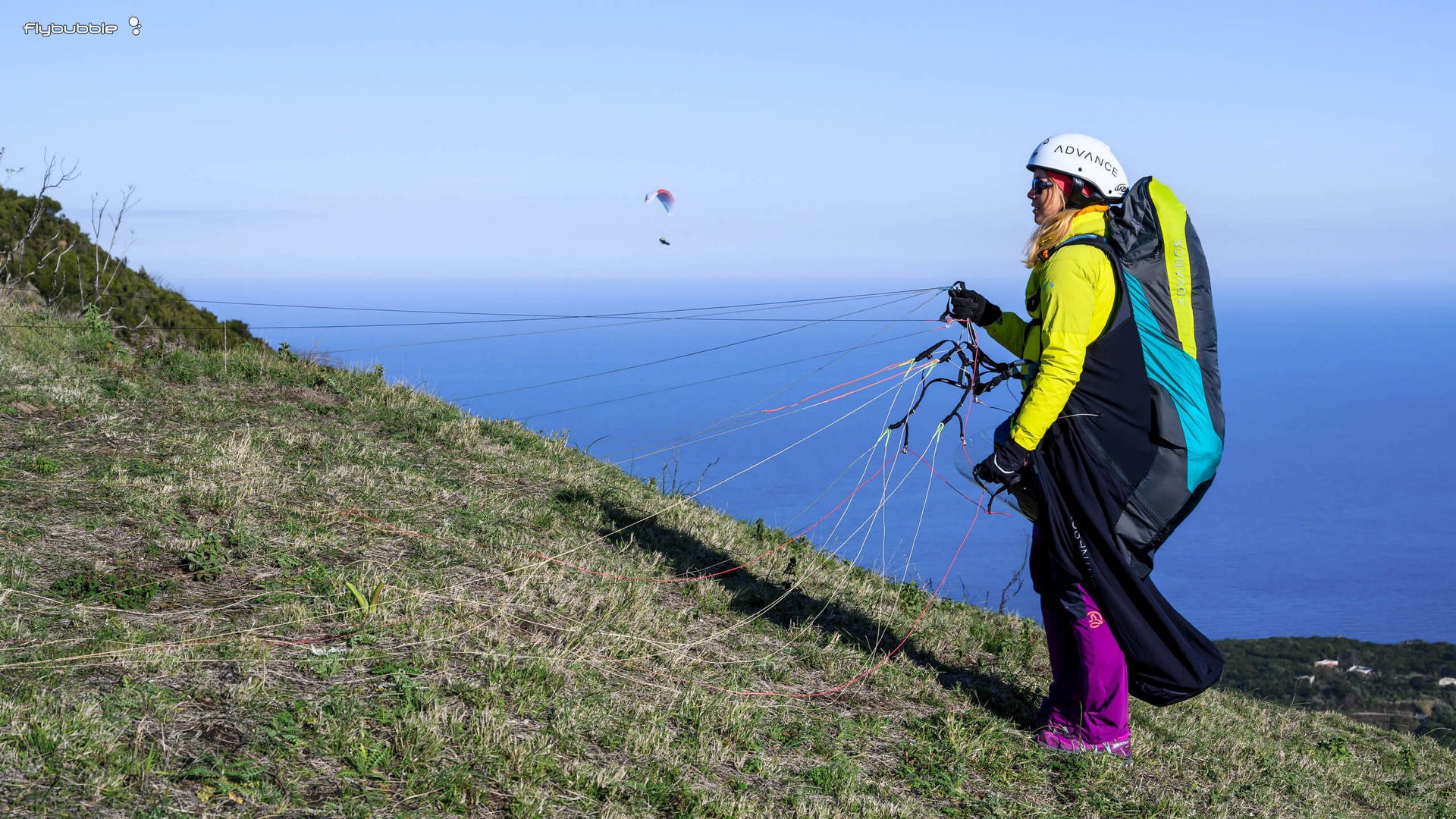 > What about moving down a size of wing?
> What about moving down a size of wing?
Taking a 95kg pilot off (eg) a 27m wing (90-115kg) and putting him on a 25m (75-100kg) has the equivalent effect on wing loading of adding 7kg ballast.
It might seem that you are much higher up in the weight range, but wings are often designed with reduced wing loading as they get smaller. Small wings are usually less efficient than larger ones and the speed change is likely to be lower than expected, and the glide performance might be degraded too. We don’t recommend chasing top speed by downsizing. There are more important factors to consider.
Weight and safety
We’d recommend being well-loaded on your wing to reduce the frequency of collapses, increase control authority and increase flying speeds. A loaded wing becomes slightly more collapse-resistant, but it will have more energy if it does collapse and your height loss might be more severe. But as long as you’re within the quoted weight range, all collapses are roughly within the norms and you’ll be able to handle them regardless of your weight – if you’ve already chosen the right paraglider class. At full speed on bar the wing deformation is worse on a loaded wing due to the force of air striking the wing making it pucker. There is a limit to how fast these things can go!
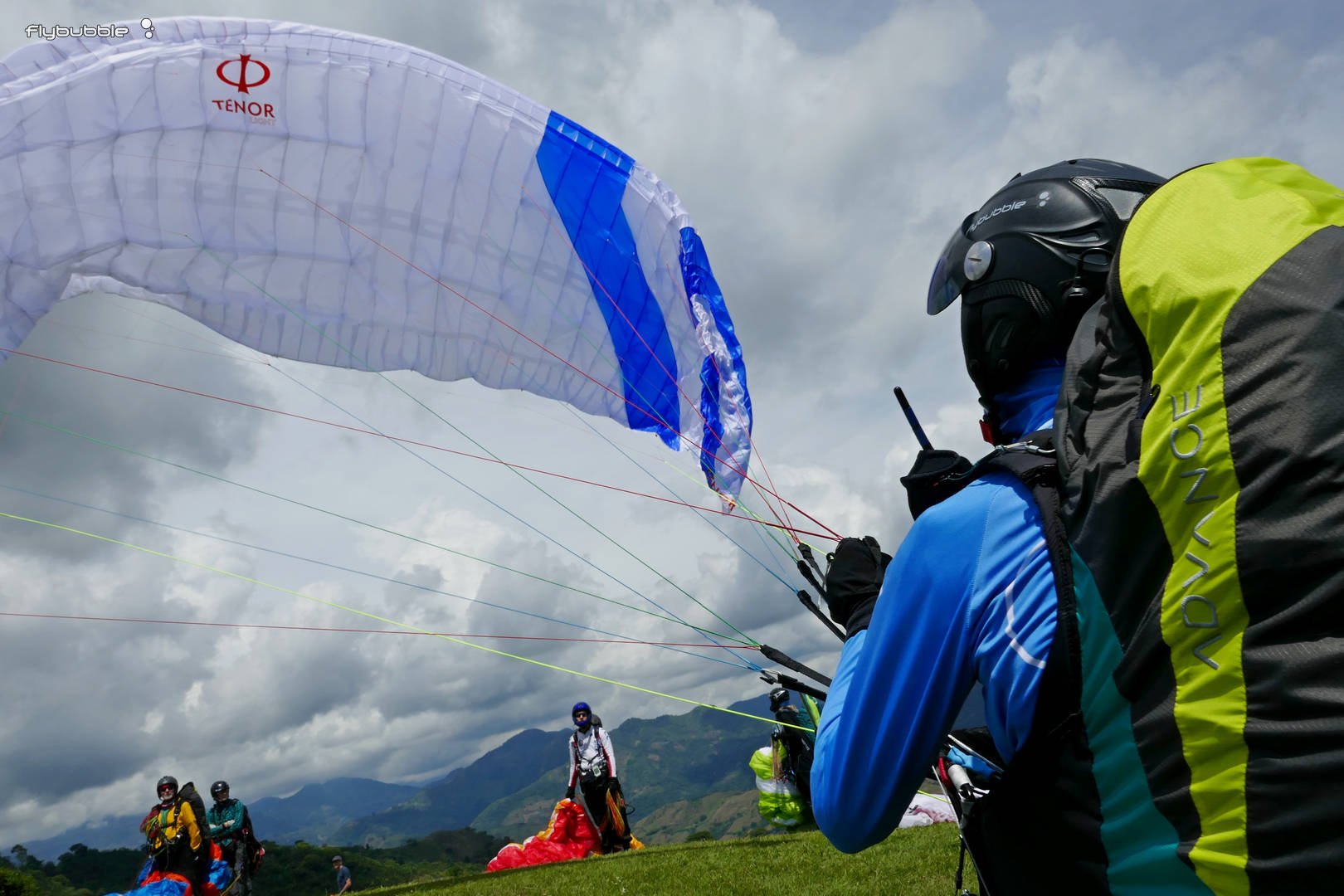 > The safety of the wing is determined primarily by the wing design.
> The safety of the wing is determined primarily by the wing design.
The safety of the wing is determined primarily by the wing design. What you can influence by changing the wing loading (within the certified weight range) will have little effect in comparison to the passive safety of the type of wing you choose.
Weight and performance
Optimum performance is found in a broad range. In the morning you need to be light; at peak thermal time you need to be heavy; then in the late afternoon light again for extended flying in weak conditions. So nobody is ever truly optimised.
There is a broad sweet spot for all wings, which is usually somewhere around 50-75% of the quoted weight range, although this varies depending on the manufacturer.
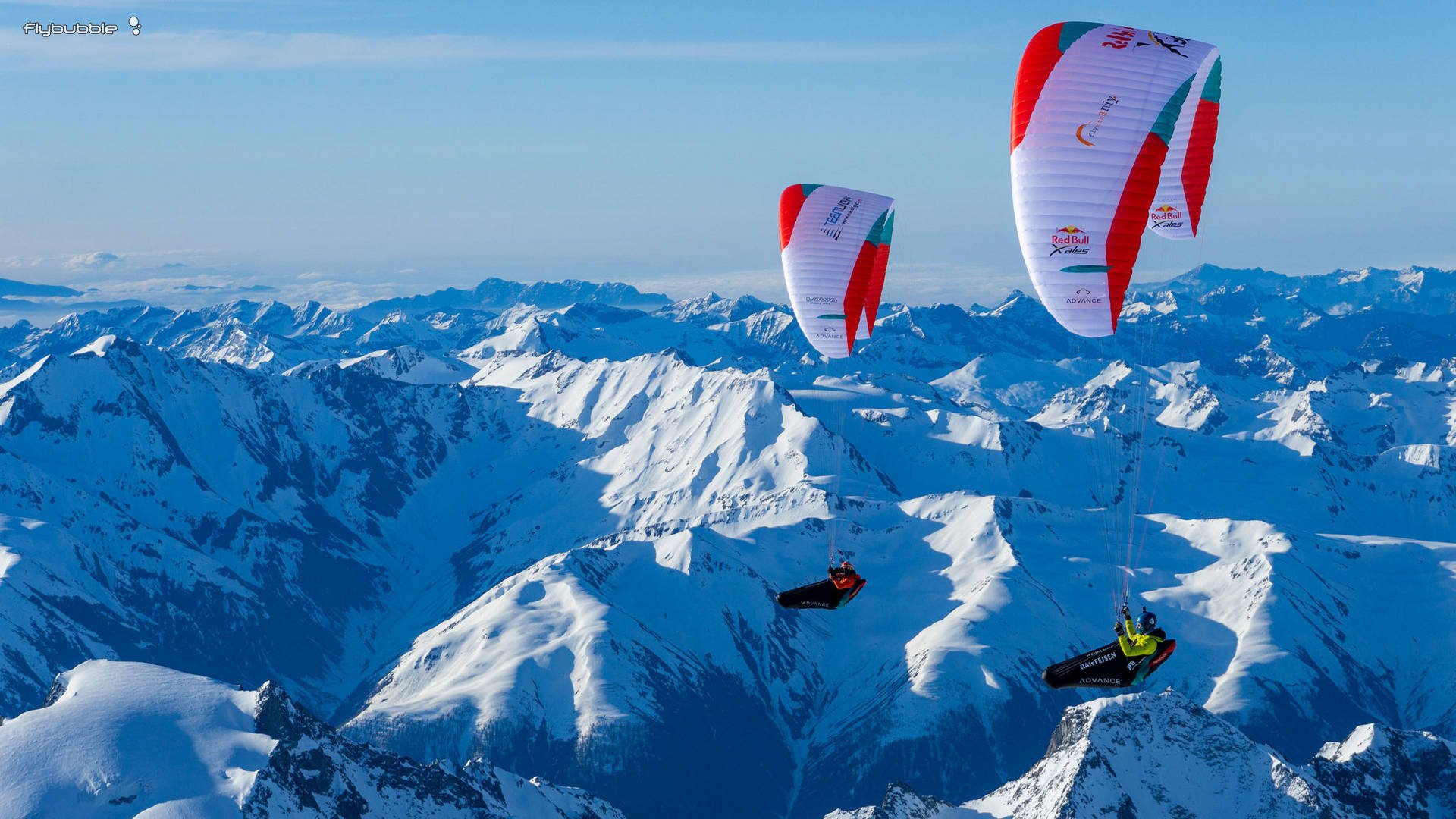 > Optimum performance is found in a broad range.
> Optimum performance is found in a broad range.
If you fly in strong conditions (wind, thermals, tricky launches) you’ll get a slight advantage by choosing a wing where you’ll be heavily loaded. If you fly in light conditions (soaring the coast, floating downwind on flatland XCs, easy launches) you’ll get a slight advantage by choosing a wing where you’re lightly loaded.
Weight and handling
An overloaded wing feels ‘hard’ and doesn’t turn well (banks too much, loses height, feels like it is ‘grinding’ around the turn). An underloaded wing feels wobbly, collapses more often in a soft, floppy kind of way and doesn’t turn that well either (sluggish handling, difficult to turn back in when thermals push you out).
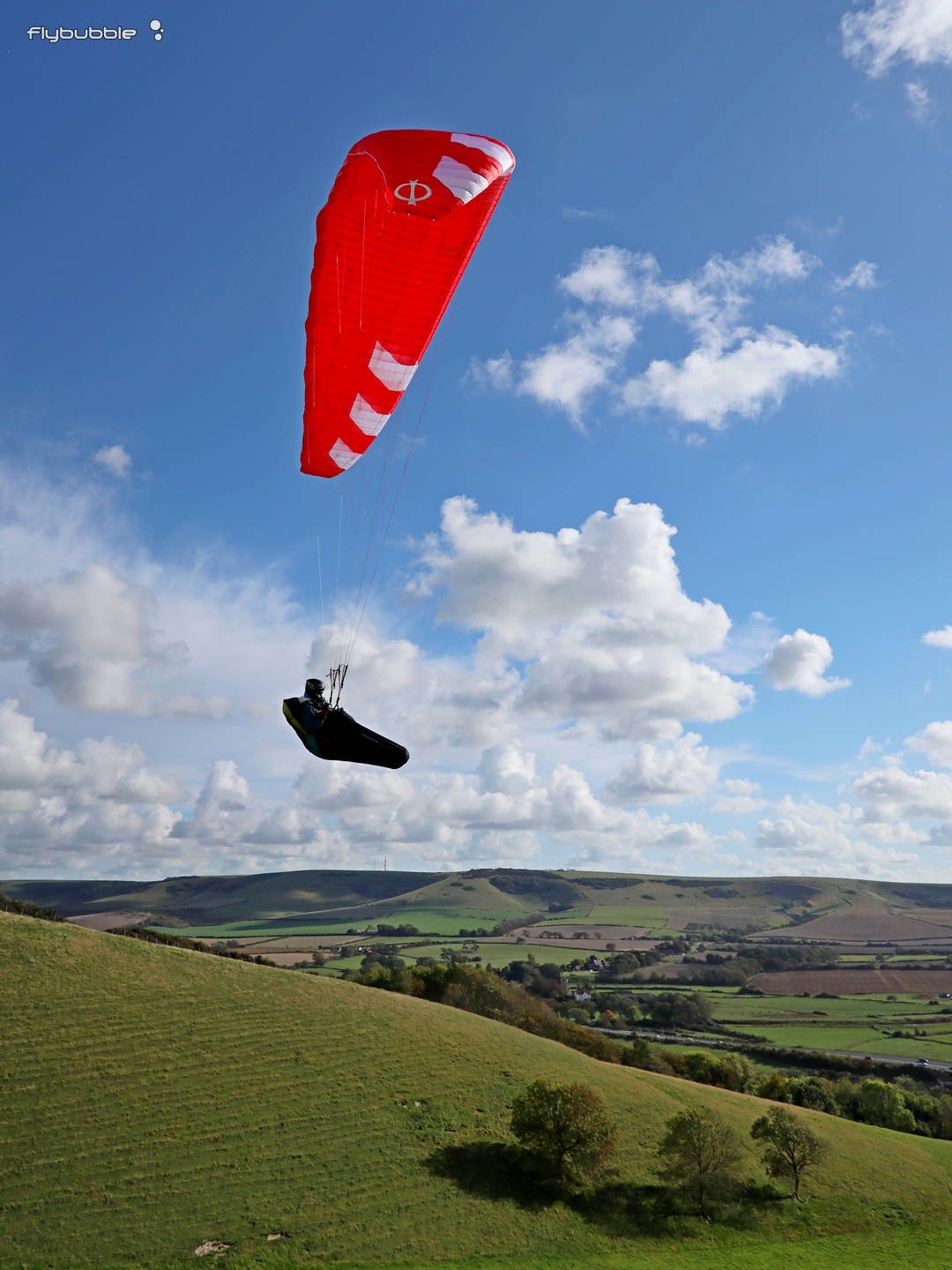 > It's best to choose a wing where you are well-placed in the weight range in the first place.
> It's best to choose a wing where you are well-placed in the weight range in the first place.
There is an optimum range or sweet spot for ‘best handling’, often around 50-80% of the certified weight range (this too varies from model to model, even size to size, and also depends on personal preference and other factors). If you’re outside of the weight range, the amount of ballast you’d need to carry before your wing handling changes significantly is impractical – and what you’ll feel most is the counterbalancing effect of a weight below your body, stabilising the harness and making turning less agile.
All in all, you must make an effort to choose a wing where you are well-placed in the weight range in the first place. If you’re outside the weight range altogether the wing will still fly. The manufacturer didn’t try to certify it at this weight because it is not an optimal loading to fly the wing at, and would probably result in a higher certification class (eg an EN B becoming an EN C). At this extreme point of low or high wing loading you will likely begin to notice a handling change.
Wing design
Every designer has their own idea of the perfect wing loading, which changes depending on their objective for the wing. If they want their target group of pilots to be impressed with the climb rate they make it larger; if they want it to get a reputation as nimble and fast they make it smaller. As the aspect ratio of the wing increases, so does the ideal wing loading because the wing is more efficient. This makes it hard to know what your ideal wing loading should be.
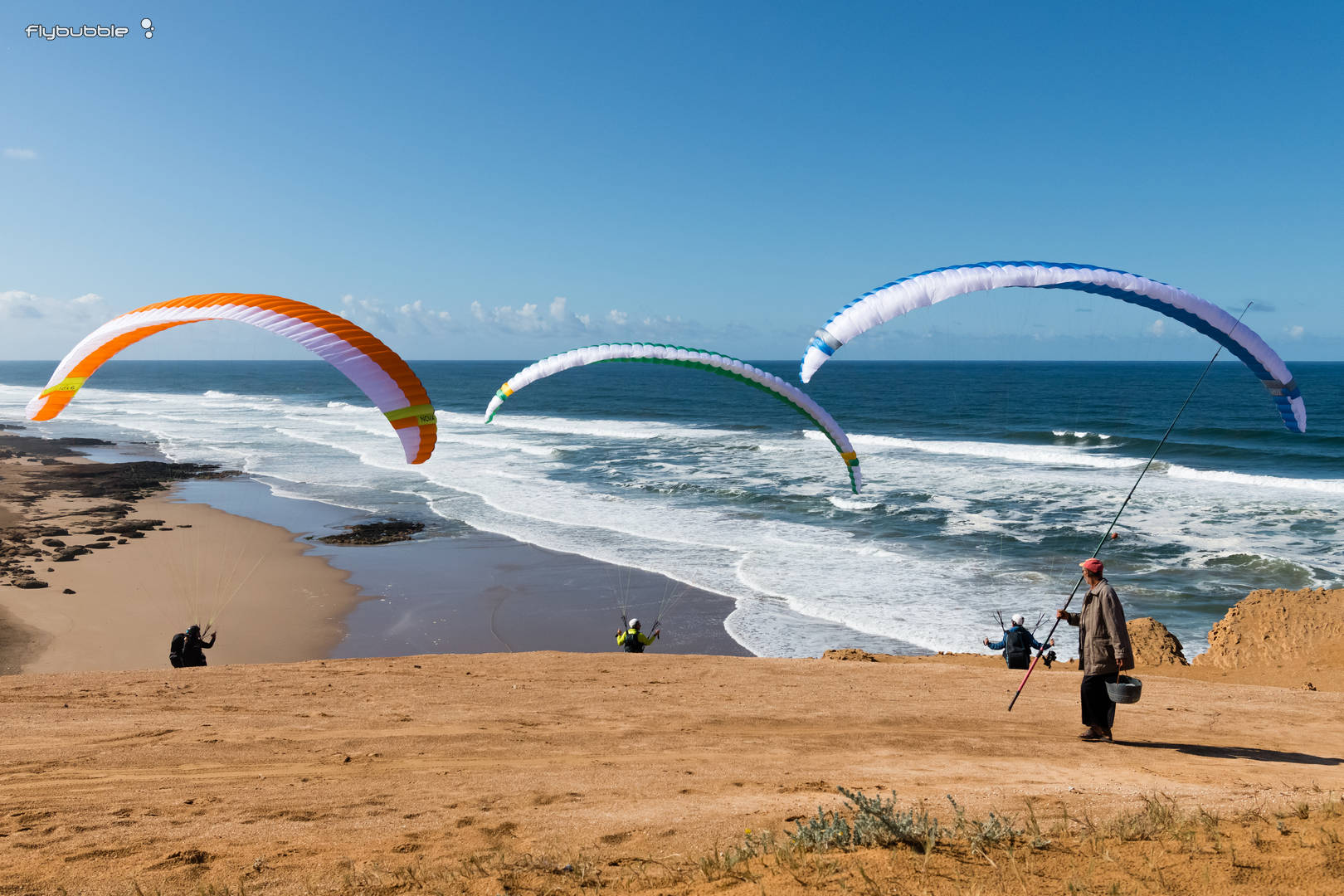 > It can be hard to know what your ideal wing loading should be.
> It can be hard to know what your ideal wing loading should be.
Manufacturers usually offer 20kg weight ranges, but the design/ manufacture/ testing/ refining/ certification process makes larger weight ranges and smaller overlaps more economical. And you might like a wing design but be in an uncomfortable place in the overlap between sizes.
As explained above, we don’t recommend ballast. We recommend getting the right wing. Be prepared to look at other brands to achieve this. This article is intended to guide pilots to choose the right wing at any time from any manufacturer’s range, which is why we’ve avoided using any model names.
When choosing your next paraglider, narrow it down to those that put you in the right place in the weight range to start with, and identify the ones that give you a wing loading that suits your flying environment. If you’re lucky you can get a trial flight on your size so you can feel the handling at its best.
Weight ranges explained
Some pilots may be confused by manufacturer’s quoted weight ranges, and these can sometimes be misleading. In short, almost all paragliders have an officially certified weight range (CWR) that accords with their certification. The glider has been tested at the extremes of this range and found to have acceptable characteristics for the EN/LTF certification level.
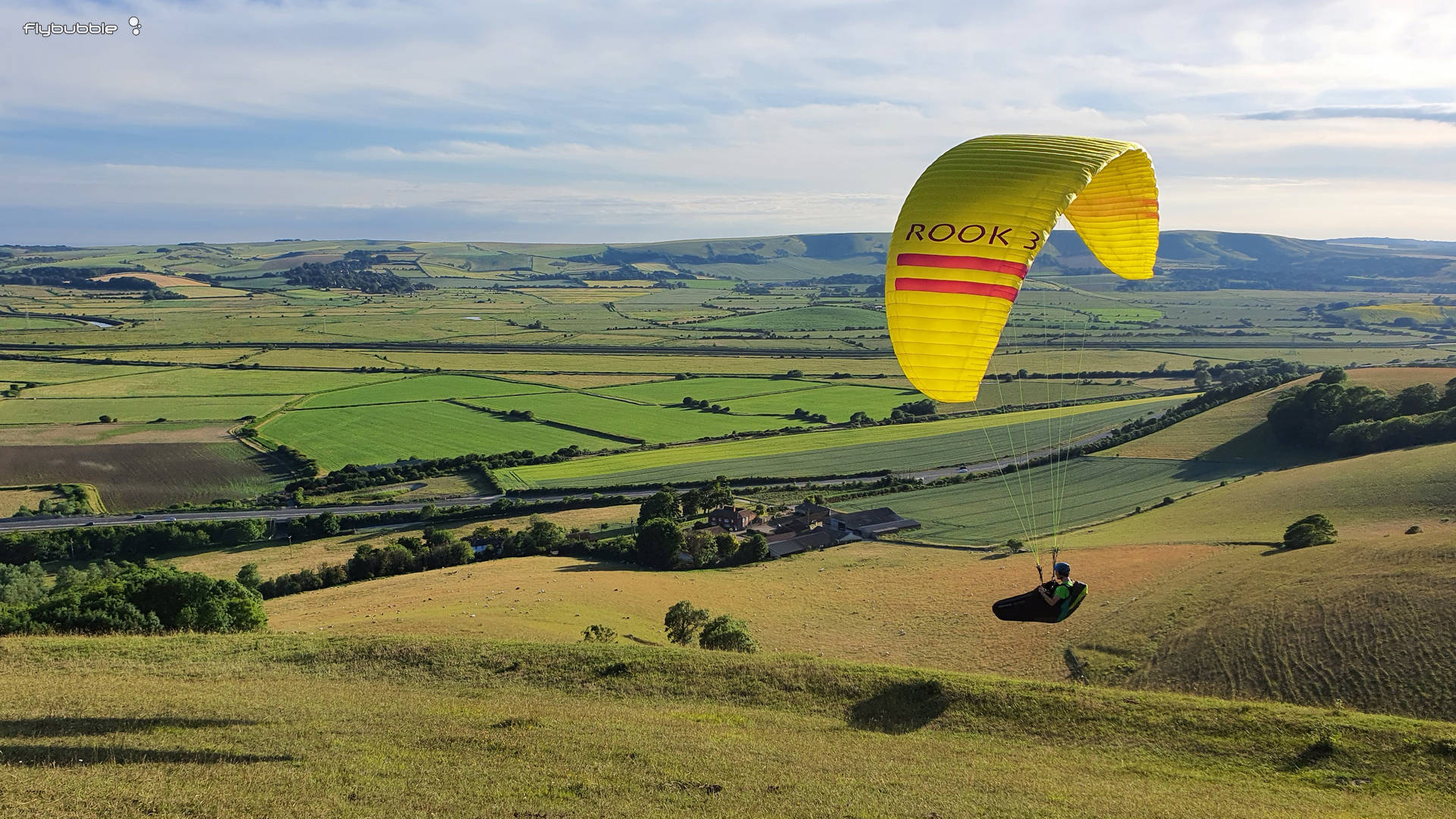 > In light conditions you’ll get a slight advantage by choosing a wing where you’re lightly loaded. But in strong conditions the advantage is with a pilot flying in the upper end of the weight range.
> In light conditions you’ll get a slight advantage by choosing a wing where you’re lightly loaded. But in strong conditions the advantage is with a pilot flying in the upper end of the weight range.
Some paraglider manufacturers also state a recommended weight range (RWR) within the boundaries of the CWR. This means the manufacturer knows the wing flies at its best within the recommended range, even if the certificated range is wider.
Some manufacturers also state an extended weight range (EWR), often certificated at a higher rating. For example a wing may be certificated at EN/LTF A wing within its CWR (and thus its RWR too), but be an EN/LTF B or C at the limits of the EWR.
Weight ranges tend to be narrower the smaller the wing. A 22m wing may have a CWR of 50-70kg (a 20kg range), while the 31m size of the same wing may have a CWR of 100-130kg (a 30kg range). In this case the recommended weight range (RWR) will also increase with glider size.
Weight ranges tend to be narrower as the performance (and certification class) of the wing rises. An EN/LTF A wing could have a tolerant CWR of 75-100kg, while an EN/LTF D wing may have a much narrower CWR of 85-97kg.
Some paragliders with EN/LTF certification are also certified at higher weights for paramotoring (DGAC certification). These are self-certified by the manufacturer; such testing as is involved does not include recoveries from extreme flight conditions, or tests repeated at various trimmer settings. The BHPA doesn’t regard a DGAC declaration as an acceptable independent verification of a wing’s safety.
Finally, some manufacturers have a tendency to get their wings certified for the largest possible range of weights to maximise the potential market. In reality their wings only fly well within a much smaller optimum weight range. A pilot can end up with a wing that is very much the wrong size for them despite being within the official certified weight range.
How to decide
When choosing your next paraglider, narrow it down to those that put you in the right place in the weight range to start with and identify the ones that give you a wing loading that suits your flying environment. If you're lucky, you can get a trial flight on your size so you can feel the handling at its best.
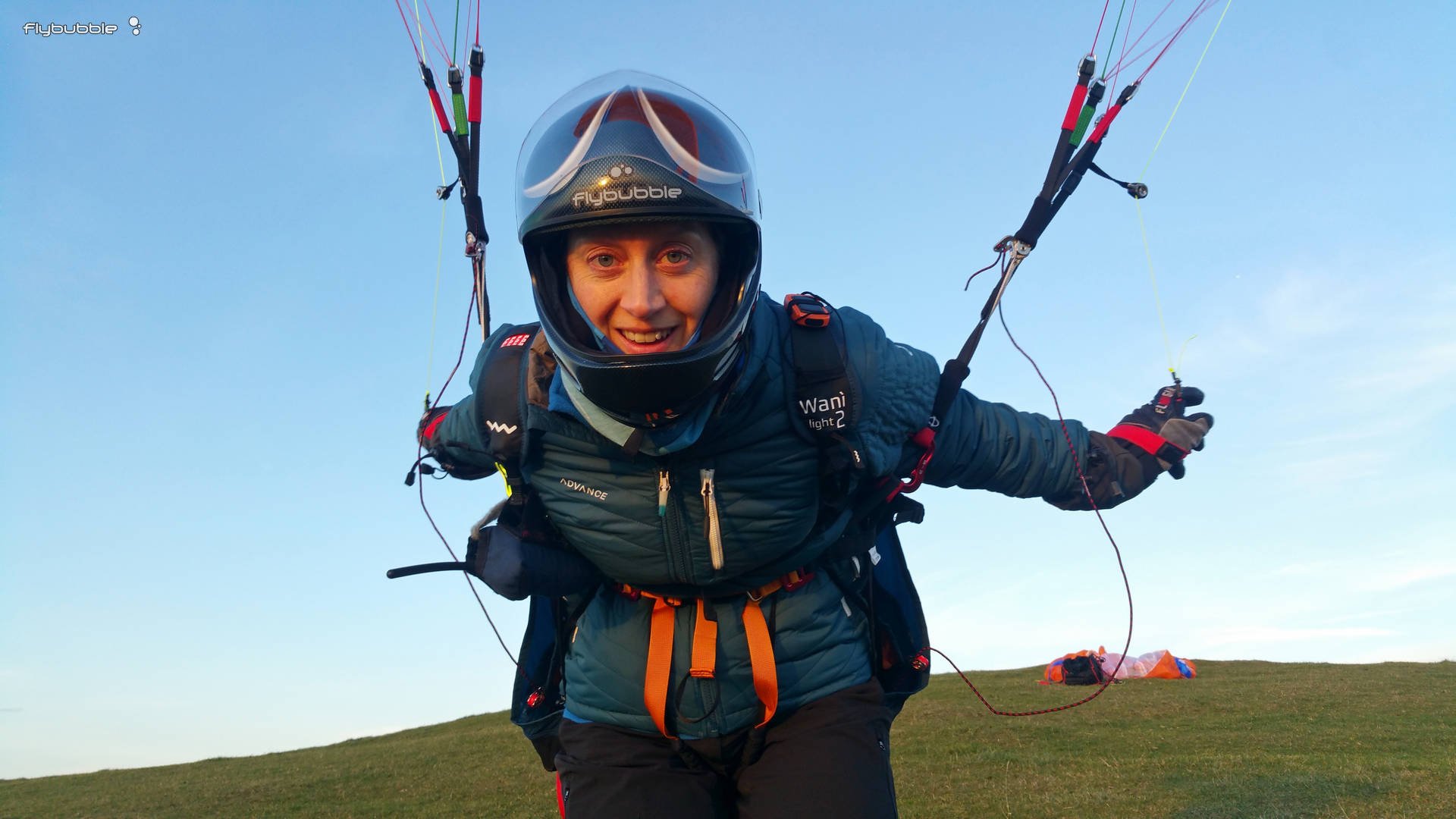 > Nancy at Flybubble on the perfect size wing, giving ideal wing loading! :-)
> Nancy at Flybubble on the perfect size wing, giving ideal wing loading! :-)
We hope this article and accompanying video (see below) help shed light on paraglider weight ranges and wing loading.
Flybubble offers a comprehensive range of wings. We'd be happy to help you make the right choice.
How to Choose the Right Paraglider Part Three: Weight Ranges video
Related reading
We take a closer look at weight ranges in our related article Paraglider weight ranges: the numbers.
Brought to you by Flybubble
Like what we do? The best way to support us is to buy gear from us. Also recommend us and be a patron. Thank you!

